
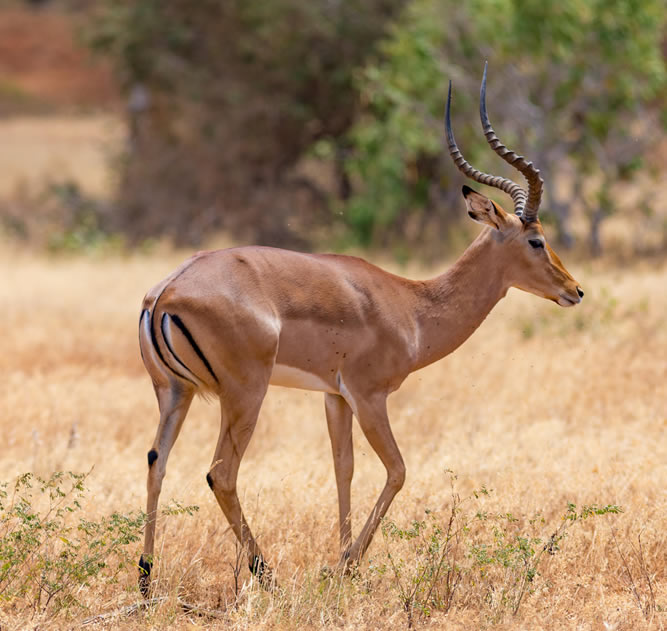
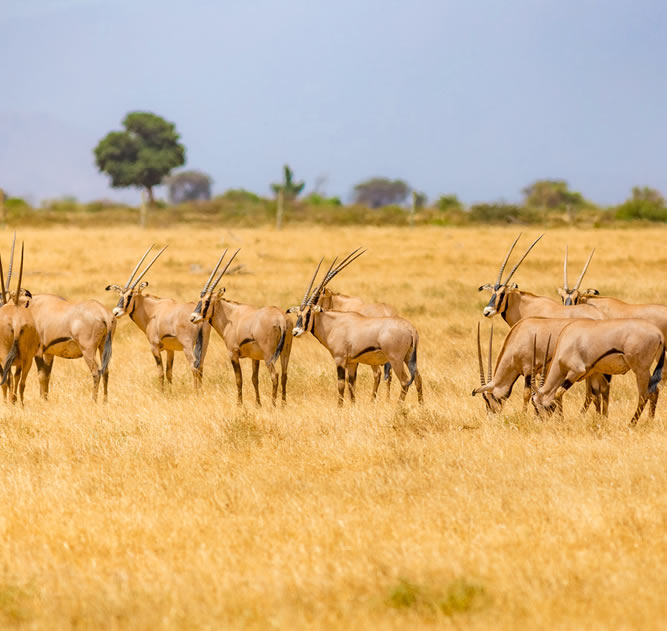
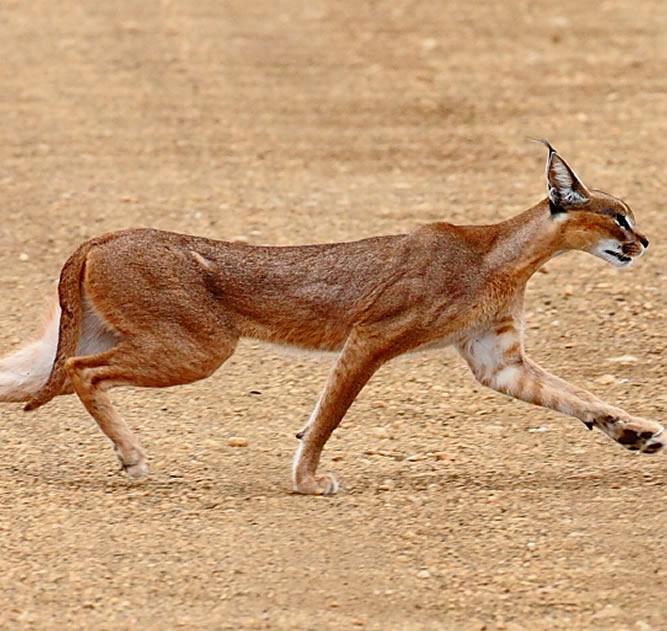
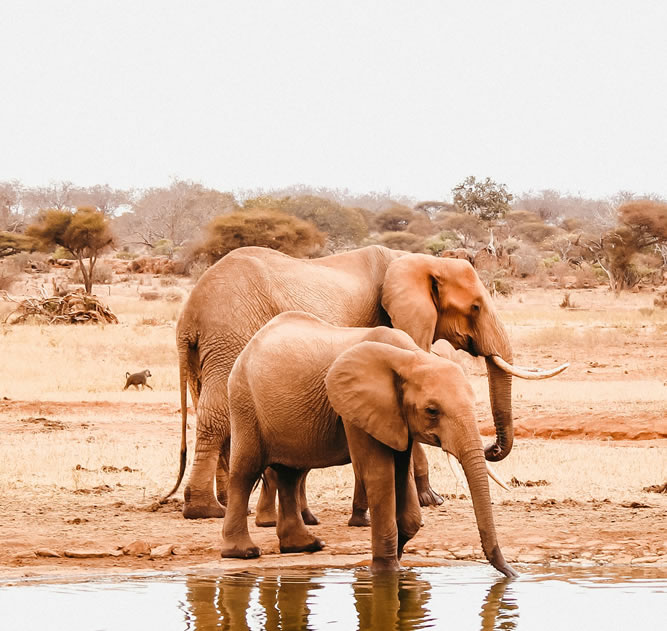
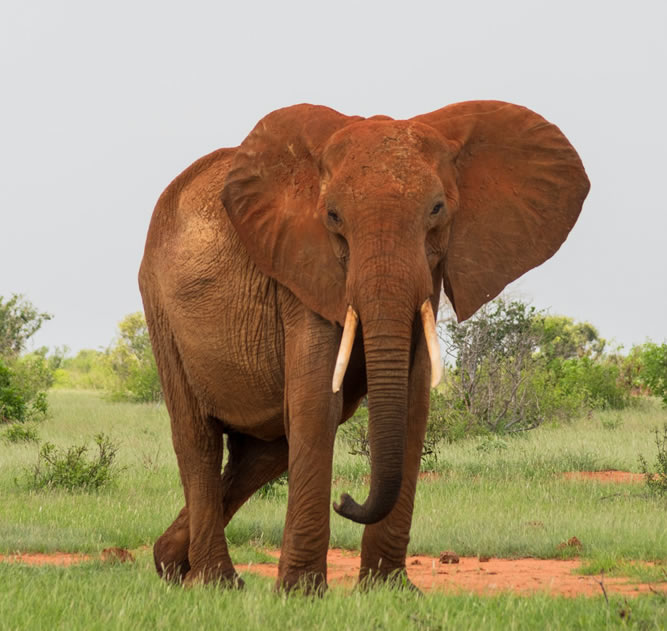
| Days | 2 Days 1 Nights |
|---|---|
| Highlights | Sightseeing Tours, Adventure Tours, Safari Tours |
| Transport | Jeep afari |
A 2-day Dik Dik Safari offers a wonderful opportunity to explore the wildlife and landscapes of Kenya, with a special focus on the Dik Dik, a small and elusive antelope known for its distinctive size and habits. While the Dik Dik is often overshadowed by larger animals, this safari will allow you to observe its fascinating behaviors in the wild, especially in the context of Kenya’s diverse ecosystems.
As your safari begins, you’re welcomed by the fresh morning air, the sounds of birds and distant wildlife, and the sight of a vast African landscape stretching before you.
Day 1: Tsavo East – Sentrim Tarhi Camp (L D)
You will be picked up from your coastal hotel / Mombasa Airport in the early morning and then head to Tsavo East National Park on the Mombasa-Nairobi Highway passing the Buchuma Gate, after we check in at the park we will start immediately with our first game drive, look out for zebras, buffaloes, various species of gazelles, waterbucks and herds of elephants. There are also various bird species, such as hornbill, eagles, kingfishers, weaver birds, giant bustards, storks, marabou storks etc. We will arrive and check in at Tsavo Sentrim Tarhi camp in time for lunch. After a short rest we go for another safari in the afternoon including the Mudanda Rock, a massive rock outcrop that is almost one mile long. Lions and Leopards favor the comfortably warm high rock as an ideal viewpoint for hunting. We will get back to Camp for dinner and overnight. In the evening you can easily observe the animals from your rooms, when they are drinking at the water holes.
Day 2: Tsavo East – Coast (B L)
Early Morning game drives with high chances of seeing the predators while hunting, then back to the camp for breakfast. After breakfast, proceed for a game drive enroute as we come out of the park arriving at a Restaurant outside the park in time for lunch, after which we drive back to your hotel on the coast, arriving there in the late evening.
PRICE INCLUDES
All park entrance fees
All game drives and transfers in a good customary minibus or Land cruiser on safari
Unlimited game drives up to 6pm (sundown)
Breakfast (B) / lunch (L) / dinner (D) as indicated
Accommodation in a double room in mentioned accommodations or similar
Local English speaking driver guide.
Enough bottled water each day
Detailed travel information.
PRICE DO NOT INCLUDE
International flight.
Visa for Kenya (about USD 50)
Beverages
Tips
June to October and January and February
June to October and December to March
April and May
June to October
March, April and May (Peak of the Wet season)
GROUP OR PRIVATE, 4×4 JEEP SAFARI Migration Tanzania Safari Tour features Days 8 Days 7 Nights Highlights Sightseeing Tours, Adventure Tours, Safari Tours…
GROUP OR PRIVATE, 4×4 JEEP SAFARI Rhino Safari Tour features Days 10 Days 9 Nights Highlights Sightseeing Tours, Adventure Tours, Safari Tours Transport…
GROUP OR PRIVATE, 4×4 JEEP SAFARI Ziwa safari Safaris Tour features Days 7 Days 6 Nights Highlights Sightseeing Tours, Adventure Tours, Safari Tours…
EXCELLENTTrustindex verifies that the original source of the review is Google. We couldn’t be happier with our experience with this agency (Isaac) during our trip to Africa. From start to finish, everything was incredibly well-organized and exactly as promised, which made the journey completely stress-free. The agency was highly reliable and exceptionally flexible in accommodating our needs. The value for money was outstanding—every hotel and itinerary detail matched our expectations, and it was clear that a lot of thought had gone into planning this trip to give us the best possible experience. Our 10-day safari and 5-day beach stay were nothing short of perfect, providing our entire family with some of our BEST memories :)Patrick, our guide, was absolutely fantastic. He had a unique talent for spotting wildlife, which allowed us to see an impressive variety of animals up close. This made the safari experience especially exciting and unforgettable. Thank you to the team for making this such a memorable trip for all of us. We would highly recommend this agency to anyone looking to explore Africa with both reliability and flexibility at a great value. 我们对这次非洲之行的旅行社感到非常满意。从头到尾,一切都安排得井井有条,完全如承诺的一样,整个行程无比轻松。这家旅行社非常靠谱,灵活地满足了我们的各种需求,性价比也极高。每家酒店和行程的细节都和预定一致,显然旅行社在规划这次行程时付出了很多心思,确保我们获得最佳体验。 我们的10天Safari和5天海滩度假都十分完美,为全家留下了美好的回忆,令人难忘。我们的导游Patrick也非常出色,拥有独特的观察动物的天赋,带我们近距离看到许多不同的野生动物,让这次Safari之旅特别兴奋而难忘。 感谢团队为我们创造了如此美好的回忆。我们强烈推荐这家旅行社,适合所有想在可靠且灵活安排下探索非洲的人,且性价比极高!姐妹们冲!Trustindex verifies that the original source of the review is Google. I couldn’t say enough good things about our experience with Best Memory. We did a 6 day safari, and our guide, Bosco, was literally incredible. The accommodation, food, experiences, everything. Will definitely recommend them and use them in the future.Trustindex verifies that the original source of the review is Google. We had an amazing time with bestmemory safari. Thanks a lot to Patrick & Isaac!Trustindex verifies that the original source of the review is Google. We used Best Memory Safaris for an almost 15 day private safari starting in Nairobi and ending in Diani Beach July 2023. We drove all over Kenya and stayed in many different locations around the country. Our accommodations were all great and our guide, Bernard, was a very personable and knowledgeable guide. We never felt unsafe, we saw incredible things and had a great time! Isaac planned our trip from beginning to end and we were very satisfied. The price of our trip was very reasonable and I would definitely recommend using this company if you are planning a trip to Kenya. The only thing I would recommend to them would be an upgrade to the safari vehicle since so much time is spent in it.Trustindex verifies that the original source of the review is Google. No words can express the amazing week we experienced thanks to Isaac and Patrick our trip was a once in a life time adventure. Thanks to best memory safaris ☺️Trustindex verifies that the original source of the review is Google. Święta organizacja safari. Wybrane lodge bardzo dobre.Na lotnisku przywital nas Izaak. Przewodnik kierowca znakomity. Dzięki Anthony!!!Asante sanaTrustindex verifies that the original source of the review is Google. Wir haben bei Best Memory Safaris eine individuelle sechstägige Safari direkt von Deutschland aus gebucht. Die Kommunikation mit Isaac per Email lief total unkompliziert und er hat die Tour individuell nach unseren Wünschen zusammengestellt, Bei Ankunft wurden wir direkt von Anthony am Flughafen abgeholt und haben Tsavo Ost, Amboseli und Tsavo West besucht. Wir waren in vier verschiedenen Lodges, die alle sehr schön und gehobenen bis luxuriösen Standard hatten. Anthony hat uns die sechs Tage zu einem unvergesslichen Erlebnis gemacht, wir hätten uns keinen besseren Guide wünschen können! Ich kann jedem eine Buchung bei Best Memory Safaris wärmsten empfehlen. Zum einen ist es deutlich günstiger als über einen deutschen Afrikaspezialisten, zum anderen ist die Betreuung deutlich besser. Wir hatten zum Beispiel flugbedingt kurzfristig eine Verschiebung um einen Tag, die Isaac adhoc für uns gemanagt hat. Vielen Dank für die unvergessliche Reise! Wir kommen wieder.Trustindex verifies that the original source of the review is Google. Issac and his team are wonderful. Highly recommend.Trustindex verifies that the original source of the review is Google. A dream come true We have booked our honeymoon with Best Memory Safaris. The trip was excellent. It last 14 days including 8 days of safari, 5 days at the beach and 1 day for arrival and departure. planning and booking Our contact person for the organization and booking of the tour was Isaac Musyoki. We were requesting for our safari offer very late, only 3 weeks before the 1st game drive started. Despite this fact, in consultation with Isaac we have created a customized journey in less than one week of time. The booking process is characterized by a high level of flexibility. Even special wishes like meeting up with my wifes godchild would have been possible. arrival After our arrival at the airport in Nairobi, Kenya Isaac and Bernard Ngei, our game driver, picked us up directly to start the safari tours. The warm welcome immediately made us feel that we are in good hands. After Isaac left us in the city of Nairobi, we went on our tour together with Bernard. game drives Our ranger Bernard first took us to the national parks Lake Nakuru, Masai Mara, Lake Naivasha, Amboseli and Tsavo West before he drove us to Diani Beach. We have spent the whole 8 days of safari together with him and enjoyed every second of it. Together we drove approx. 2000 km through the country and its national parks. Usually we did two game drives a day. One in the early morning, starting between 6 am and 7 am., and one in the afternoon. Due to the fact, that a safari trip probably stands and falls with the guide, we would like to share some of our impressions of Bernard: a) He is very friendly, attentive and always cares about his guests, which means he is asking if a toilet stop is necessary or if there is still enough drinking water in the car to give a few examples. b) He shapes the game drives flexible (i.e. weather-dependent) and is very regardful about his passengers. Whenever we needed a rest, i.e. after a long trip, he adjusted the time for the upcoming game drive. c) He respects the habits and habitats of the animals. He knows how to provide an excellent view to the animals and the scenery for taking very nice pictures without disturbing the animals. d) He is extremely experienced (> 25 years of safari tours) and therefore gained so much knowledge about his home country Kenya and its animals. e) Moreover he understands and predicts the behavior of the animals. That’s why he is always one step ahead of many other game drivers to get the best views to the animals for his passengers. He acts absolutely far-seeing. f) He does not overload the passengers with too much information about the animals. He doses information the right way and is also a good listener when talking with each other. g) He is cross-linked to so many people across Kenya. It is unbelievable. It seems like he is knowing every person in Kenya. h) He is multilingual. He speaks Swahili and the other languages spoken in Kenya (native languages). Furthermore he speaks excellent English (2nd native language) and also German. Probably he is even speaking more languages that we did not find out. i) He knows the limits of his land cruiser (recommended) and the conditions of the roads. That’s why we always felt very safe. j) He helps in every situation and clarifies that vegetables are washed with drinking water in the accommodations we have been. Bernard Ngei made our honeymoon very special. Every second with him was so much fun. We really enjoyed our community. accommodations We have stayed in high standard tent camps and lodges, that were very clean, provided a wide range of meals and had a very friendly and helpful staff. departure A business-partner of Best Memory Safaris brought us from our hotel in Diani Beach to the airport of Mombasa, from where we flew home with all these beautiful memories in our bag. conclusion If you are planning to do a safari tour, book with Best Memory Safaris. The name says it all. They get a five star rating from us.Trustindex verifies that the original source of the review is Google. It was an excellent experience. After landing Isaac was there to receive. Our tour guide Michael was very knowledgeable and experienced. Every stay and food were very good. They even upgraded one of our stay to presidential suite. I would definitely suggest Best Memories Safari.
Best Memory Safaris operates on excursions and safaris in East Africa. we also offer tailor made tour programs which specially fit your travel plan, including Mountain trekking,walking safaris and Social project visits. Our Kenyan office is located on the South Coast of Mombasa at Diani Beach and managed by a Team of seasoned professionals. We pride over 15 years experience and international class exposure in safari business.